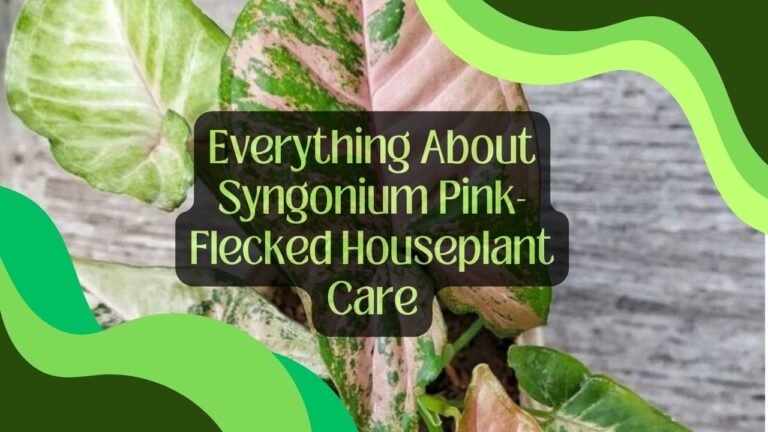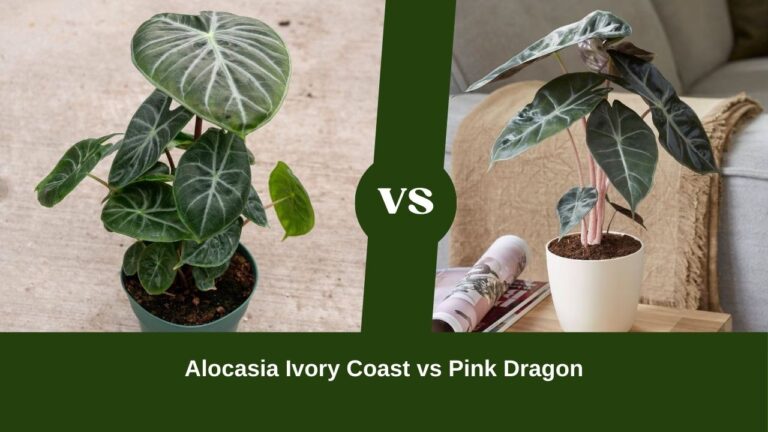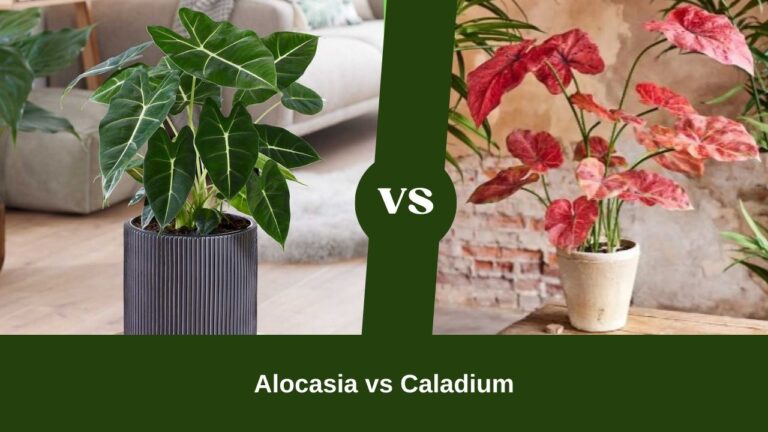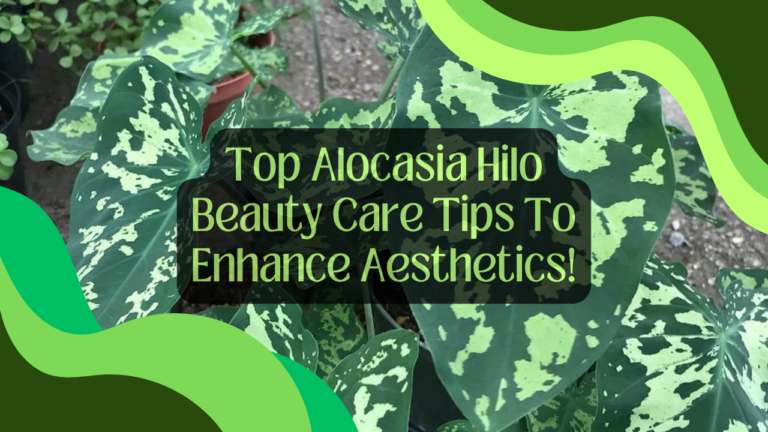Essential Alocasia Care GuideBook for Indoor Raising
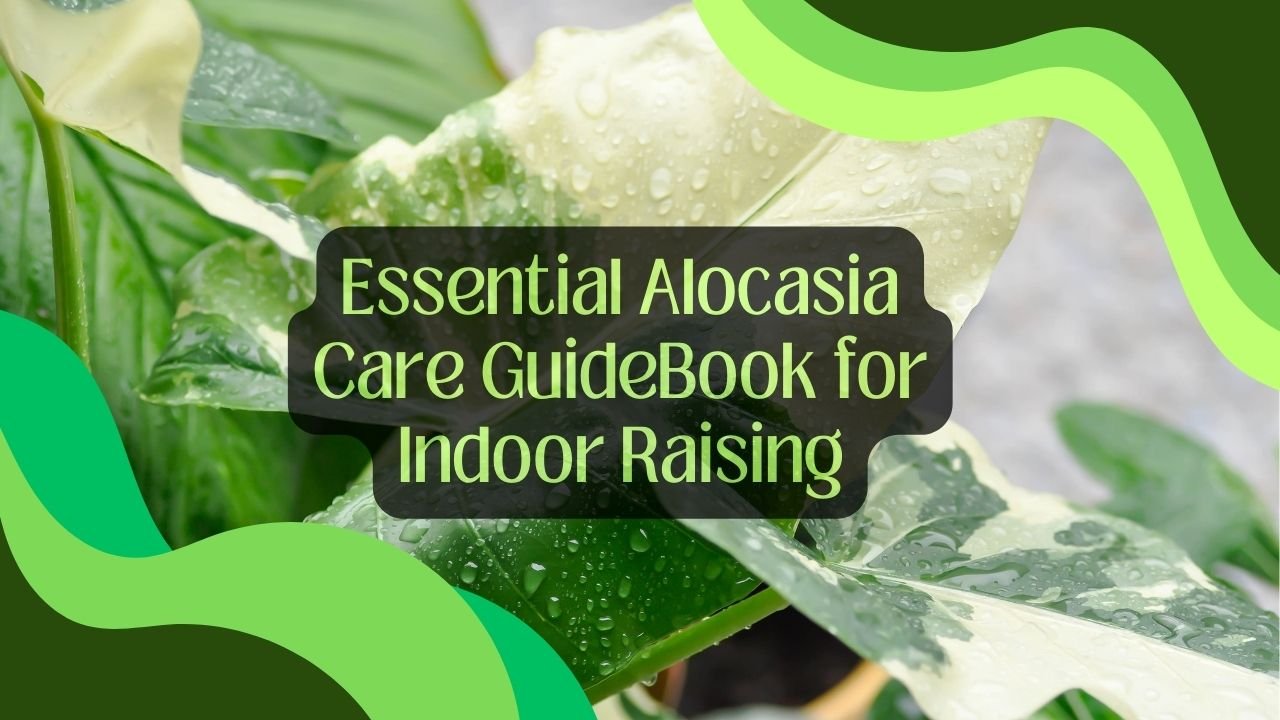
Caring for Alocasia plants is super easy. With just a little sunlight, these pretty plants will grow well and look great. All you need to ensure is, appropriate lighting, watering on a timely basis, and fertilization as required.
But caring for Alocasias changes with the seasons. When winter comes, these plants go dormant from the shorter days, even in bright rooms. If your Alocasia starts drooping in the fall, it’s probably going dormant. Don’t freak out! Just stop watering it and don’t throw it away. It’ll perk right up again when spring returns.
To have a more in-depth view, don’t skip the article. I hope you’ll be with me throughout the article.
Table of Contents
Alocasia Care Instructions: 6 Key Tips
Have a healthy and green-colored Alocasia in your home? Follow the below caring tips –
Alocasia Requires Bright Indirect Light
Alocasias can handle different light levels, from low to bright indirect light. Colocasias, on the other hand, prefer full sun. The amount of light a plant gets affects how fast it grows. To make your Alocasia grow well with oversized leaves, put it in a place with plenty of bright indirect light. It can survive in lower light but won’t grow as fast.
If you take your Alocasia outside in warmer months, put it in a spot with partial shade to avoid burning its leaves in direct sunlight.
How Frequently Should I Water My Alocasia?
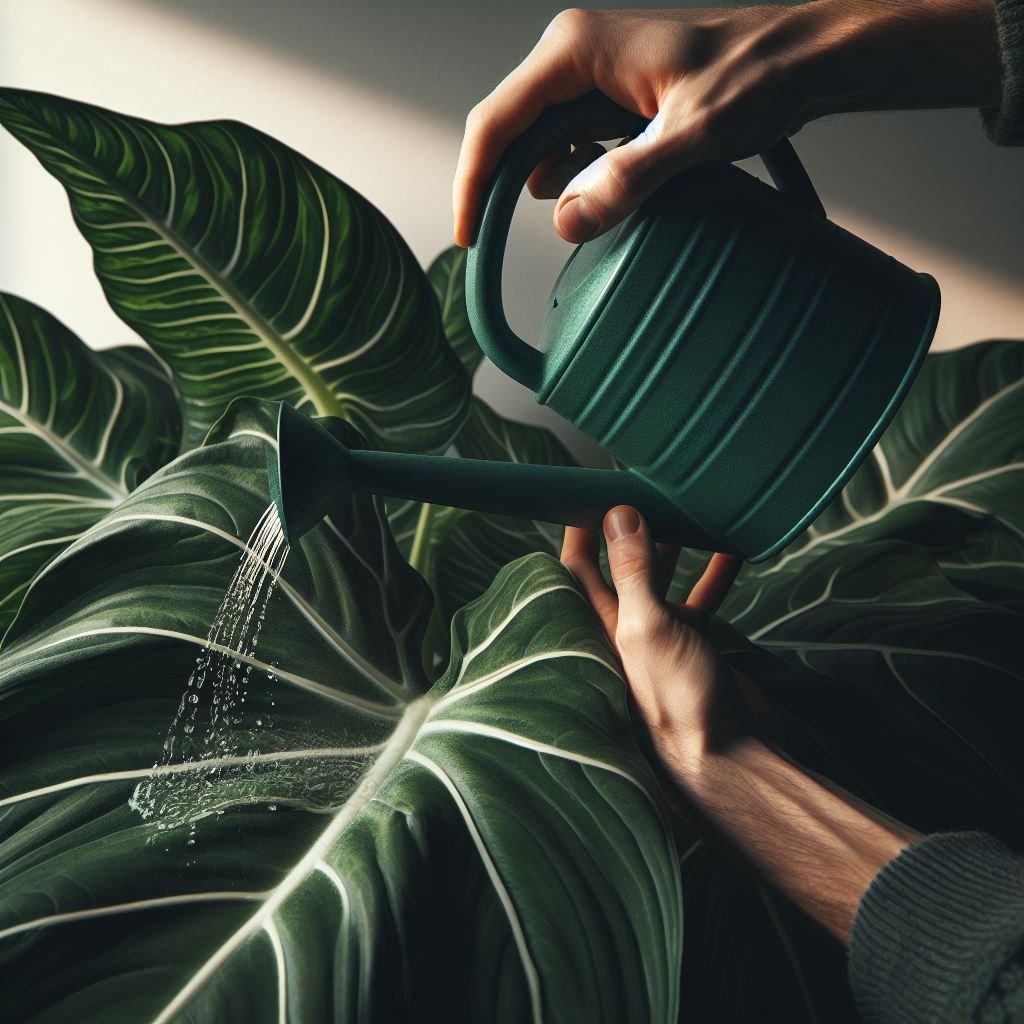
Water alocasia plants when the top of the soil is a bit dry. Alocasias need medium water. Keep the soil consistently moist. Alocasias like the soil to partially dry between waterings but not become soggy. Water less in colder months if the plant isn’t growing actively.
You should water your Alocasia about once a week during the active growing season. Check the soil by inserting your finger into the top few inches and water when it feels dry. In the winter when growth slows, you may only need to water every 10-14 days.
Be sure not to overwater, as Alocasias are prone to root rot if left in soggy soil. Allow the soil to dry out moderately between waterings.
Moisturized Soil Determines Optimal Alocasia Health
Both Alocasia and Colocasia like loose, nutrient-rich potting soil. Use soil that holds moisture but drains excess water to prevent root rot.
Most pre-mixed soils work. Ensure there’s organic matter like coco-coir, peat moss, or shredded leaves. Avoid soils with moisture-retaining crystals. If your soil drains too quickly, repot your Alocasia in compost-rich soil with less drainage material.
Ideal Temperature: 60°F Or Above?
Alocasia and colocasia prefer warmer temperatures, typical of their subtropical origin. Room temperatures above 60°F are good. If you move them outdoors, bring them inside before it gets below 50°F.
Don’t place them near doors, drafty windows, or heating/cooling vents. Fluctuating temperatures can slow growth and harm leaves. In colder months, Alocasia goes dormant, so keep them in slightly cooler temperatures.
Alocasia is A Fan of Consistent Humidity
Alocasia and colocasia love humidity, given their subtropical roots. Put them in high-humidity areas. If your home is dry, use a humidifier or a pebble tray with water to give them the needed moisture.
Don’t Forget to Fertilize Frequently
Regularly fertilize when the plant is actively growing. Plants with large leaves benefit more. Use a diluted liquid fertilizer, fish/seaweed emulsion, or slow-release fertilizer. Don’t fertilize when the plant is dormant.
Expert Suggestions To Ensure Optimal Alocasia Care
Let’s have a look at some additional expert tips.
- Rotate the pot a quarter turn every time you water the alocasia. This will ensure the plant gets even sunlight exposure and prevent it from growing towards just one side.
- When it’s time to repot, choose a container only 1-2 inches larger. Alocasias prefer being a bit rootbound. You can also divide the plant and repot in multiple containers.
- Alocasias have a rhizome root system with nodes where new growth begins. You can propagate an alocasia by cutting off part of the rhizome and planting it – it will grow into a new plant.
Does Alocasia Go Through A Dormacy in Winter?
For winter care of colocasia, an alocasia variety, trim back the foliage, place it in a cool spot with low light, and stop watering since colocasia goes dormant. In spring, move back to good light and resume regular watering.
Do Different Alocasia Species Require Different Care?
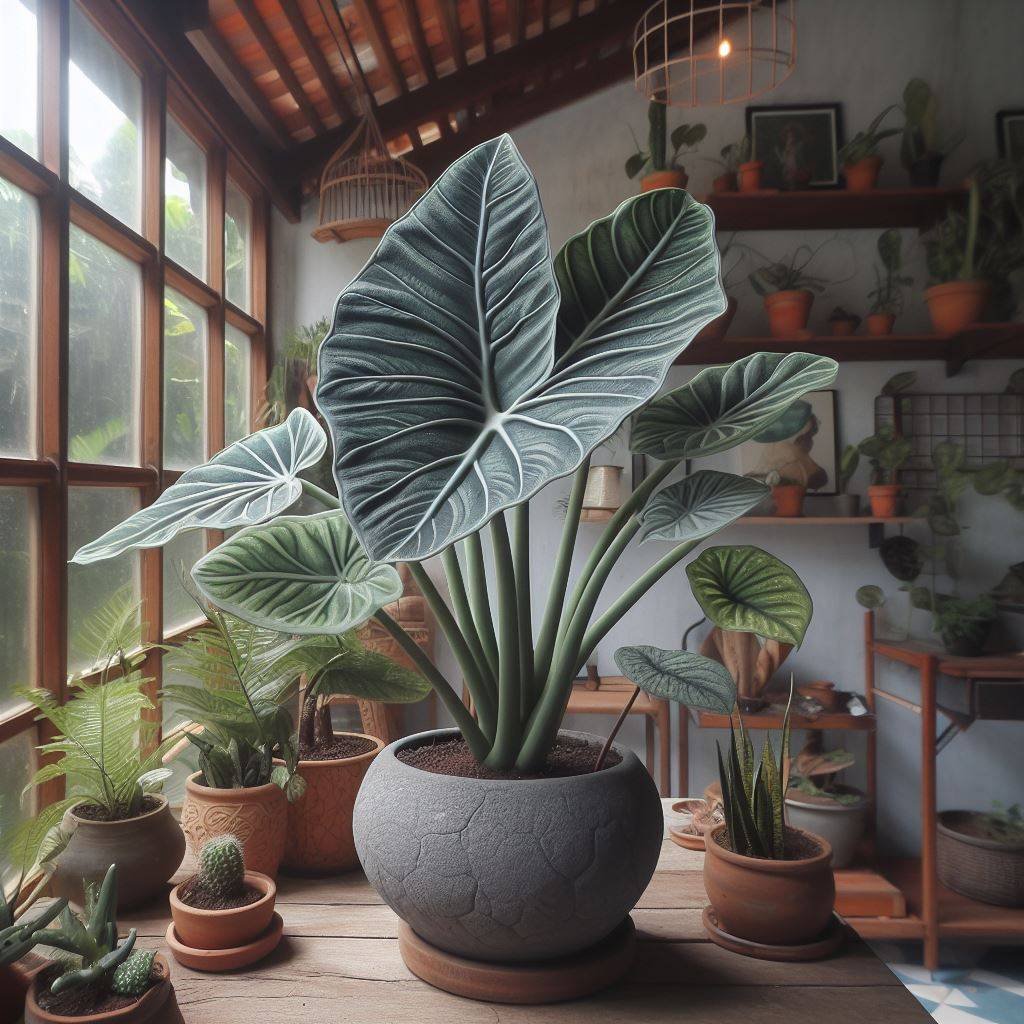
No, the care for Alocasia isn’t changed while the variant is changed very often. Most Alocasia species thrive in bright, indirect light. Avoid direct sunlight, which can scorch their leaves.
Water Alocasias when the top 25-50% of soil is dry. Take care not to overwater, as they are prone to root rot. Fertilize monthly in the spring and summer with a balanced liquid fertilizer diluted to half strength.
Provide high humidity by using a humidifier, pebble tray, or regular misting. Alocasias prefer 60-80% humidity. Keep temperatures between 65-85°F. Avoid drafty areas and cold drafts.
While care is similar across Alocasia species, some varieties like Alocasia Azlanii and Alocasia Black Velvet need medium light instead of bright light. But in general, focus on providing bright indirect light, humid conditions, warm temps, and avoiding overwatering for healthy Alocasias.
Recommended articles:
- Alocasia Red Secret Care
- Top Alocasia Hilo Beauty Care Tips To Enhance Aesthetics
- Alocasia Azlanii Care Tips
FAQ’s
Don’t skip this section as you’ll find a bunch of Q&A asked all across the internet.
Q: Do I have to cut my alocasia plant?
Yes, it’s a good idea to trim your Alocasia regularly. This helps it grow new parts and stay in good shape. Cut off any leaves or stems that are dead or damaged.
Q: My Alocasia has no leaves anymore! Should I throw it away?
Don’t give up! Alocasias can bounce back even if they lose all their leaves. They store extra energy in their thick parts underground. If your Alocasia looks sad, try putting it outside in a shaded spot during spring or summer.
I’ve brought back many Alocasias at the Greenery shade house this way, and they can come back strong!
Q: Which Alocasia is the easiest to grow?
Alocasias come in different sizes. Small ones grow up to 24 inches, medium ones are about 3 to 4 feet tall, and big ones can reach 10 feet.
The largest types are usually grown outside in gardens and are sometimes called ‘elephant ears.’ For beginners indoors, a good choice is the small kind called ‘Polly.’ It’s easy to find and not too expensive. Another option is ‘Pink Dragon,’ which has pretty pink stems.
Final Words
These fantastic tropical plants are a great addition to your home. They have exceptional leaves and make a strong impression. Although they can be a bit picky, they can happily live in your home with a few changes.
It’s a good idea to have at least one alocasia of each type!

